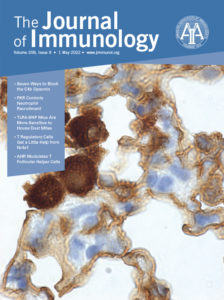Monday, May 9, 2022 10:15 AM – 12:15 PM ET Room A107–109
Innate Immune Response to Infection
Chairs
- Fayyez Sutterwala, Cedars-Sinai Med. Center
- Naeha Subramanian, Univ. of Washington
Speakers
- Christopher Michael Horn, Univ. of Nebraska Med. Ctr., Glycolysis is critical for granulocytic myeloid-derived suppressor cell (G-MDSC) activity during Staphylococcus aureus biofilm infection
- Maria J. Gonzalez Orozco, Univ. of Texas Med. Br. at Galveston, The E3-ligase TRIM7 acts as an antiviral factor by ubiquitinating the SARS-CoV-2 membrane protein to limit apoptosis and virus replication
- Jacob S. Yount, Ohio State Univ., Interferon-induced transmembrane protein 3 (IFITM3) limits lethality of SARS-CoV-2 in mice
- Smita Kulkarni, Texas Biomed. Res. Inst., Virus-induced long noncoding RNAs regulate SARS-CoV-2 pathogenesis
- Ajay Suresh Akhade, Inst. for Systems Bio., Seattle, A non-canonical role of caspase-1 in regulating bacterial physiology and antimicrobial resistance
- Jerod A. Skyberg, Univ. of Missouri-Columbia, Nucleotide receptors mediate protection against neonatal sepsis and meningitis caused by alpha-hemolysin expressing Escherichia coli K1
- Juselyn D. Tupik, Virginia-Maryland Col. of Vet. Med., The Goldilocks Conundrum: The protective and adverse roles of immunoregulation by NOD-like receptors (NLRs) during brucellosis
- Suman Gupta, Cedars Sinai Med. Ctr., Leptospira spp. are a potent activator of Type I IFN responses via the cGAS-STING pathway



